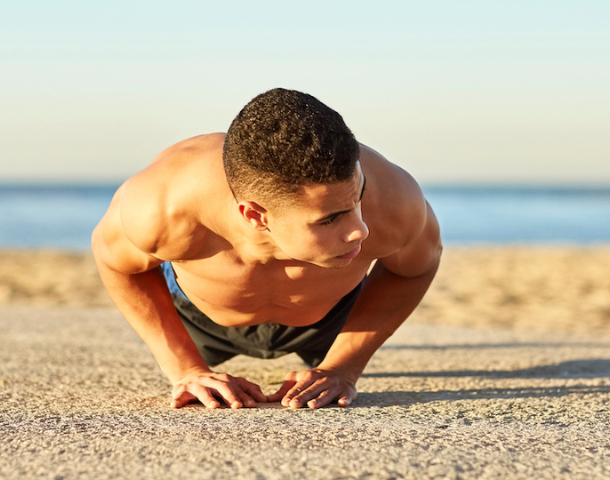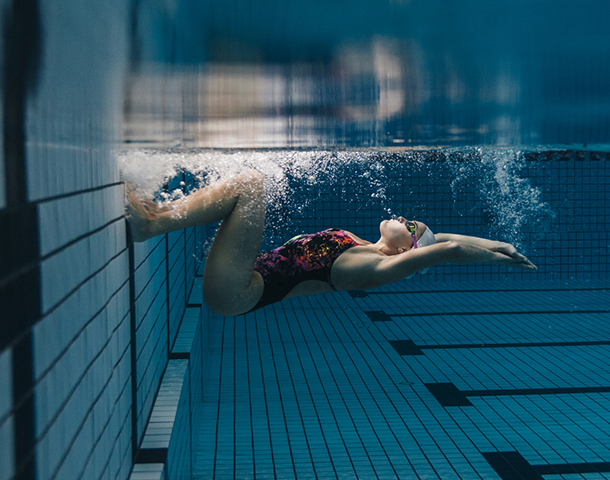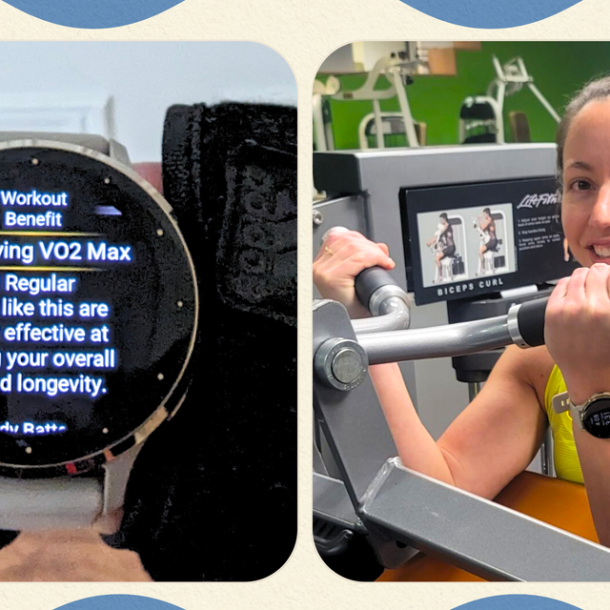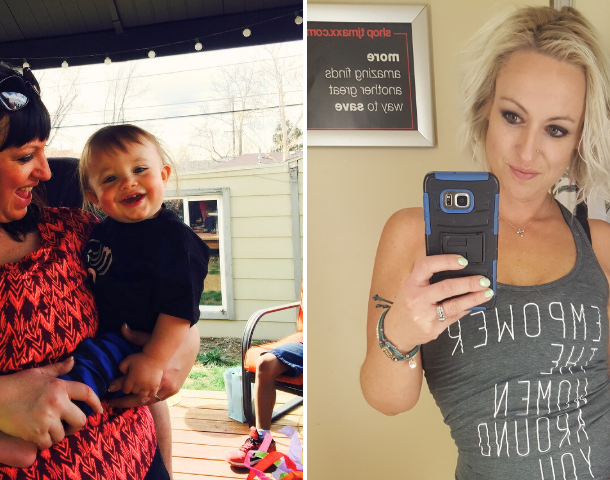
I Trained for My First Half Marathon With the Hoka Skyward X. Here Are My Thoughts
Starting with the obvious…let’s talk about its giant platform. Like I mentioned, the pair I received has a stack height of nearly two inches. I’ll admit: I had serious doubts about how I could possibly walk, let alone run, in these babies without twisting my ankles—but more on that later.
Another thing that immediately caught my eye was how stunning these Hokas looked. I’m usually not one to fuss over aesthetics for my workout stuff, but it was impossible not to be impressed by the gorgeous gradient of pastel blue, salmon pink, and sunset orange-yellow on the midsole. It got me really excited to look (and hopefully feel) great on my runs—and the fact that they’re stylish enough to pair with my everyday outfits was a major bonus too (especially since these cost more than $200).
Fit and feel
If you’ve got wide feet like me, you’ll probably love the new Hokas. My usual size (6.5, which I wear for both street and running shoes) fit perfectly—my toes were snug but not squished or cramped, and my heel stayed put without slipping. That said, you may want to consider sizing down if you have narrow feet.
Comfort-wise, this shoe checked all of my boxes, which was surprising, given how intimidatingly tall it is. For my first two days of testing, I actually just walked in them to make sure I wouldn’t break my ankles. But once I took them out on my runs, I was pleasantly surprised at how secure my feet felt. The Skywards were definitely kind of heavy and didn’t have that super squishy, “walking on clouds” feel (thanks to that carbon fiber plate). But I actually preferred the sturdier, more stable support they provided for longer distances.
On the run
Since I’ve been training for my first half marathon, I wore these sneakers on all sorts of runs in preparation—including a 10-miler, which at the time was my longest ever—and one thing stood out every time: My feet didn’t hurt at all! I’ve dealt with my fair share of running injuries, and I usually experience a dull ache on the bottom of my foot around the fifth mile. Not with these, though: No pain points or sharp twinges. I truly felt like I could keep going.
They were snug and hugged my feet just right, giving me the kind of support I desperately needed during uphills, which would be huge in my upcoming half in Central Park. Over time, I also came to realize that the extra cushion wasn’t just for show: It blunted the impact of each step to make the experience pain- and ache-free (a real lifesaver when I’d be pounding the pavement for nearly two hours).
That said, this super trainer isn’t the perfect pick for every type of run. Unfortunately, they felt as heavy as they looked, weighing in at 9.2 ounces. So when I tried picking up the pace, it felt like I was dragging some extra load along. Personally, this wasn’t a huge deal-breaker for me for longer runs (where speed isn’t my priority), but it’s definitely something to consider if you’re trying to set a personal record.
Bottom line
Honestly, this shoe deserves major props for being the only one that has kept me injury-free and confident to tackle double-digit miles—which I’ve never experienced with any other sneaker, including the Hoka Mach X, my previous go-tos for shorter runs that left my feet aching after an hour.
I’ll probably still hold onto my Nike InfinityRN4 (another of my standbys) for those quick sprints when I’m gunning for a personal best. But overall, I’m so excited to have the Skywards in my rotation: They’ve really boosted my confidence as a new runner, and now I feel ready (excited, even) to tackle my first half marathon.
Related Articles
2023 Bodyfender @ All Rights Reserved


